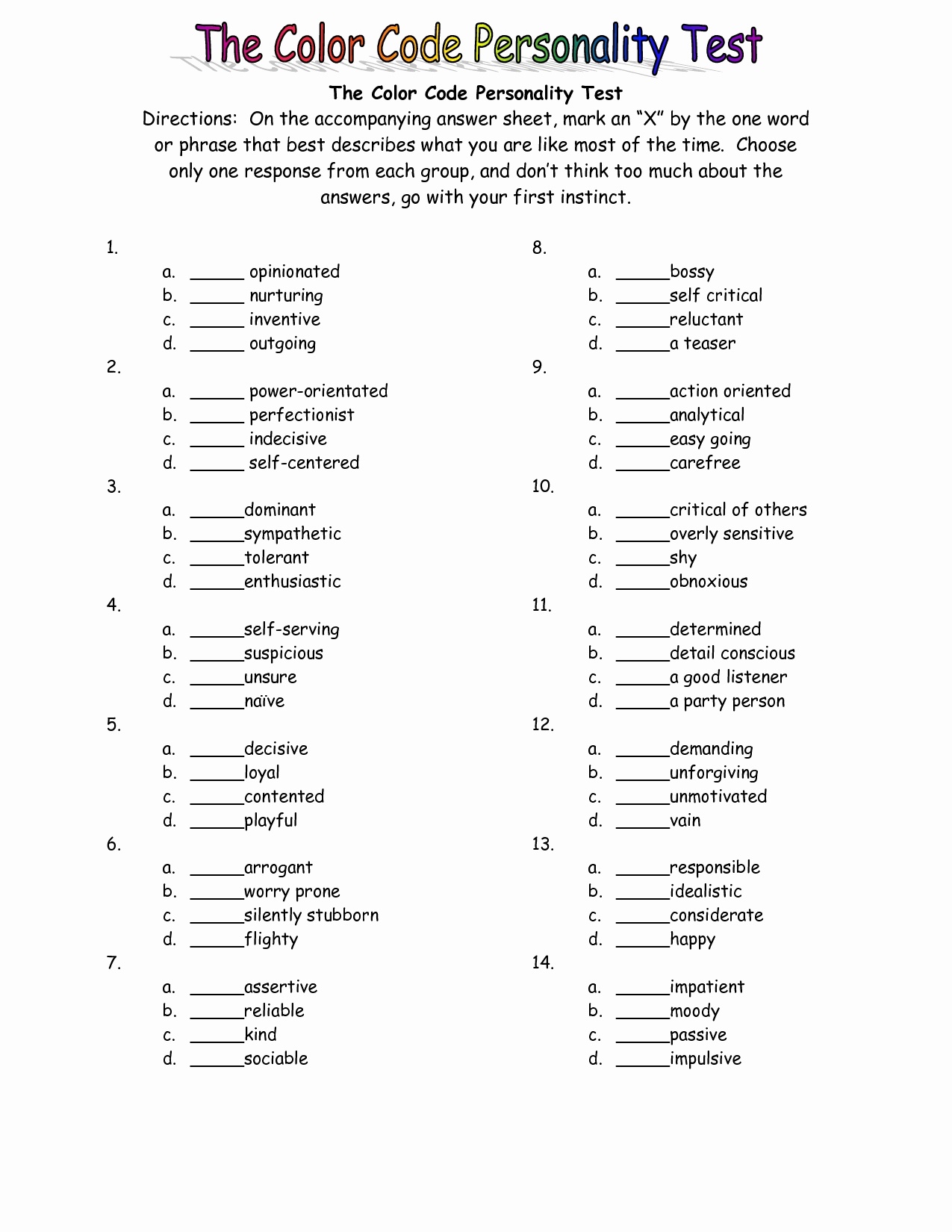The Myers-Briggs Personality Test is a well-known personality assessment tool that has been used for decades to help people understand their personalities, strengths, and weaknesses. This test is based on the work of Carl Jung, who developed the theory of psychological types, which suggests that there are four main categories of personality: Extraversion vs Introversion, Sensing vs Intuition, Thinking vs Feeling, and Judging vs Perceiving. Each category has two opposing processes, and the combination of these processes, as well as their degree of preference, determines an individual’s personality type.
Printable Myers Briggs Personality Test
 The Myers-Briggs Personality Test is often used by career counselors, educators, and human resources professionals to help individuals better understand their strengths and weaknesses, and to make informed decisions about their careers and lives. The test has been found to be highly accurate and reliable, and is widely used in a variety of settings.
The Myers-Briggs Personality Test is often used by career counselors, educators, and human resources professionals to help individuals better understand their strengths and weaknesses, and to make informed decisions about their careers and lives. The test has been found to be highly accurate and reliable, and is widely used in a variety of settings.
The Myers-Briggs Theory
The Myers-Briggs theory is based on the work of Carl Jung, who was a Swiss psychiatrist and psychotherapist. He believed that people had innate preferences for how they perceived the world and how they made decisions, and that these preferences could be grouped into four categories. The first category is Extraversion vs Introversion. Extraverts are outgoing, talkative, and enjoy being around people, while introverts are quiet, reserved, and prefer to spend time alone. The second category is Sensing vs Intuition. Sensing individuals rely on their senses to gather information and prefer to deal with concrete facts and data, while Intuition individuals rely on their intuition and imagination to gather information and prefer to deal with abstract concepts and possibilities. The third category is Thinking vs Feeling. Thinking individuals are logical, analytical, and objective, while Feeling individuals are empathetic, compassionate, and subjective. The fourth category is Judging vs Perceiving. Judging individuals are organized, decisive, and prefer to plan and stick to schedules, while Perceiving individuals are spontaneous, adaptable, and prefer to keep their options open.
Using the Myers-Briggs Personality Test
The Myers-Briggs Personality Test is widely used in a variety of settings, from career counseling to personal development. It can help individuals understand their strengths and weaknesses, and can provide insight into their potential career paths, as well as their relationships with others. The test is often administered by trained professionals, but printable versions of the test are also available online for individuals to take on their own. When taking the test, it is important to be honest and answer each question as accurately as possible, as this will provide the most accurate results.
Personality Type Descriptions
After taking the Myers-Briggs Personality Test, individuals receive a four-letter code that represents their personality type. There are 16 possible combinations of the four categories, each with a unique description. Here are brief descriptions of each personality type: - ISTJ: The Inspector, logical, practical, and detail-oriented. - ISFJ: The Protector, warm, compassionate, and dependable. - INFJ: The Counselor, empathetic, insightful, and imaginative. - INTJ: The Mastermind, strategic, independent, and analytical. - ISTP: The Craftsman, adaptable, resourceful, and practical. - ISFP: The Composer, artistic, creative, and sensitive. - INFP: The Healer, idealistic, compassionate, and introspective. - INTP: The Architect, innovative, logical, and analytical. - ESTP: The Dynamo, energetic, practical, and confident. - ESFP: The Performer, outgoing, enthusiastic, and fun-loving. - ENFP: The Champion, imaginative, enthusiastic, and empathetic. - ENTP: The Visionary, innovative, logical, and outspoken. - ESTJ: The Supervisor, practical, dependable, and efficient. - ESFJ: The Provider, supportive, warm, and responsible. - ENFJ: The Teacher, charismatic, compassionate, and organized. - ENTJ: The Commander, strategic, confident, and assertive.
Conclusion
The Myers-Briggs Personality Test is a valuable tool for individuals who want to better understand themselves and their relationships with others. It provides insight into an individual’s innate preferences and tendencies, and can help guide career choices and personal development. Whether you are taking the test for personal reasons or through a professional setting, it is important to be honest and answer each question as accurately as possible to obtain the most accurate results.